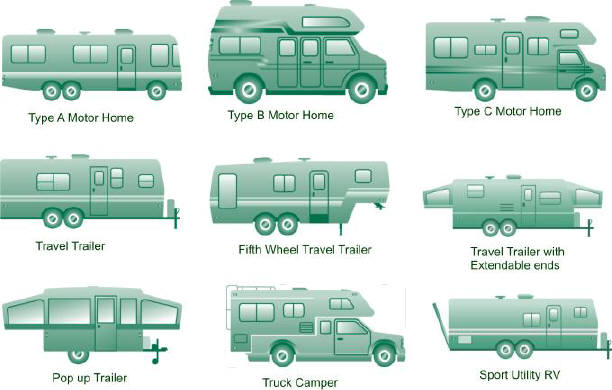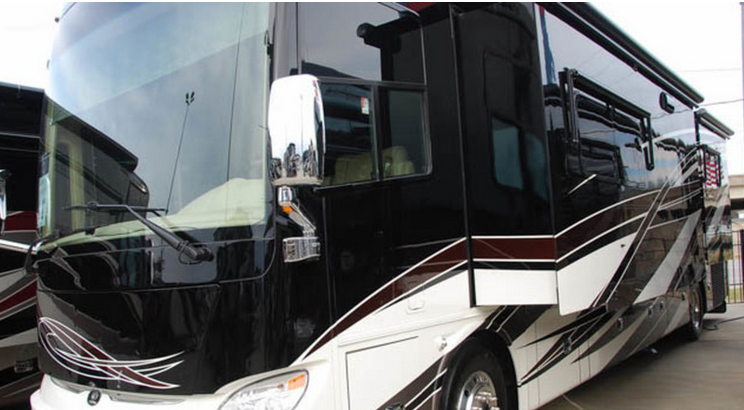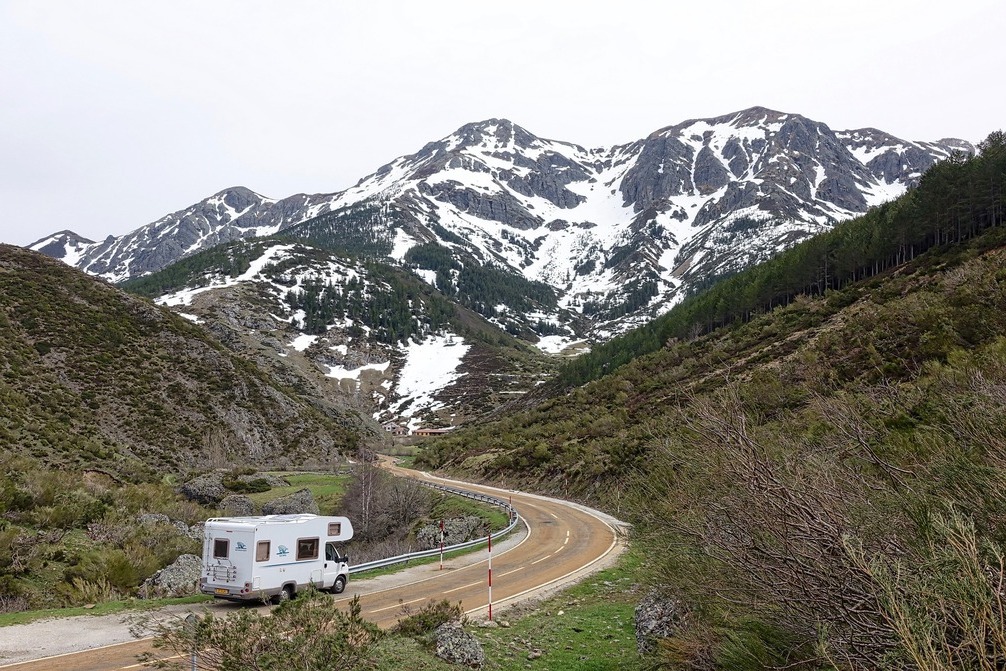If you’re new to RVing, all of the jargon and phrases might be a bit confusing. What’s the difference between an RV and a motorhome? Is a Class A bigger or smaller than a Class C? What in the world is a toy hauler? Here we’ll outline the basics of what you need to know as you familiarize yourself with the RV world:
 Here’s a handy cheat sheet to learn your RV types. Photo credit thisoldcampsite.
Here’s a handy cheat sheet to learn your RV types. Photo credit thisoldcampsite.

This is an example of a class A diesel pusher from Tiffin. Notice the slide out capabilities that expand the interior space when parked. Photo from Vogt.
[caption id="attachment_19" align="aligncenter" width="744"]
- Class B Motorhome: You would think Class B motorhomes would be next in size to the Class As if we were going in alphabetical order, but these are in fact the smallest motorhomes, and hence usually the most economical. Generally built on a cargo van chassis or a Mercedes Benz sprinter chassis, these are sometimes referred to as camper vans and range from 16’ to 22’ in length.
- Class B+ Motorhome: A more recent classification, the Class B+ is a hybrid between the Class B and Class C motorhomes, mixing the superior fuel-economy of the Class B with the added storage space offered by the Class C.
- Class C Motorhome: Also built on a van chassis, Class C motorhomes can be distinguished by an over-the-cab area that typically houses a berth. These range from 21’ all the way up to 35’ in length, and usually have room for amenities like a separate shower stall and a separate sleeping space that the Class B lacks.
 Can you name this motorhome? That’s right! It’s a Class C because of the over-the-cab sleeping berth.
Can you name this motorhome? That’s right! It’s a Class C because of the over-the-cab sleeping berth.
Types of Towables
Towables have been extremely popular in recent years because of their affordability and versatility. Additionally, towables by vintage luxe brand, Airstream, have made a comeback as they find popularity among younger generations. Here are the most common types of towables:
- Park Model: Ranging anywhere from 35-45 feet, these trailers are thus named because they do not have their own water reservoirs and must be hooked up at a campsite (in other words, not self-contained). You might have heard about park models recently in the news, as HUD clarified the distinction between park model RVs and manufactured homes.
- Fifth Wheel: The 2nd longest towables, fifth wheels are generally 21-40 feet and must be hauled by a pick-up outfitted with a special fifth wheel hitch. Part of the fifth wheel extends over the truck bed to minimize the overall towing length.
- Toy Hauler: Toy Haulers are perfect for adults who want to bring along their grown-up toys on the road trip. With a separate compartment just for toys, you can bring along your ATV, golf cart, ski doos, or motorcycle. Toy haulers can be either fifth wheels or travel trailers.
- Travel Trailers: Generally smaller than fifth wheels, travel trailers range from 12-35 feet and can be towed by any SUV or truck with a hitch.
- Folding Campers: Popup campers are perfect for those that need something small and compact for weekend camping trips. These fold down for travel and pop out when parked, so you have an area for sleeping that far outshines your standard tent.
- Truck Campers: Truck campers are affixed over the bed and hood of a truck to offer a small living area. While not ideal for full-time living, truck campers can be the perfect solution for quick weekend getaways.
 Airstream’s sleek metal travel trailers have been dubbed “silver bullets”
Airstream’s sleek metal travel trailers have been dubbed “silver bullets”
As you can see, there are tons of options when it comes to purchasing an RV, and there’s sure to be one that suits your needs and tastes. Keep in mind that there are lots of companies that rent RVs, so it might be a good idea to try before you buy.
